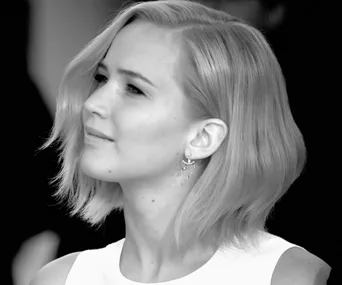Over the weekend, talented junior surfers Zoe Steyn and Rio Waida won the Billabong Pro Junior series in Ballito, South Africa for their respective genders. The surf comp’s organisers were so proud of the young guns that they posted this pic on the Ballito Pro Facebook page:

One little problem; Zoe only received half the prize money of her male counterpart, which makes sense if you think about it.
It’s not like they surfed the same waves, battled the same conditions and fairly scored higher points than their talented competitors. Oh, they did? Right, well Billabong—the sponsors—only charge half as much for their female apparel and sporting goods, so Rio technically needs the extra money to fund his sport. Oh, those costs are also comparable? Got it.
Well, Zoey definitely hasn’t suffered enough for the sport. She only fought off a 10-foot Great White shark when she was 13-years old.
“I just saw this huge black eye looking straight at me and a huge bang as it took my board and began shaking it,” she said after the attack last year.
“It latched on with its jaws just missing my leg and it tipped me backwards and I fell in and I just saw the black shape of it in the water and panicked.”
This isn’t the first time the sport has gotten flack for its treatment of women. Its entrenched hyper-masculine image has manifested in instances of obvious sexism, like top female pro surfers being expected to wear bikinis instead of boardies to attract sponsors.
Former top 10 surfer Rebecca Woods complained she was dropped by her sponsor—the very same Billabong—in favour of surfers with model looks that would be eliminated in the first round.

Rebecca Woods emerging from the surf.
“I didn’t particularly feel like I wanted to get naked to become more famous,” she told 7.30.
“It’s pretty challenging surfing in a bikini in the water, too. You lose them and your bum’s out and it’s frustrating and you just want some boardies on sometimes.
“But if that’s your pay packet and if you want to go to certain events, you’ll put a bikini on because your dream is to win a world title.”
Last year—and while this isn’t necessarily surfing’s cross to bear—surfing legend Laird Hamilton blamed shark attacks on women swimming while menstruating.
“The biggest, most common reason to be bitten is a woman with her period, which people don’t even think about that,” he said, in his best impersonation of Squirt from Finding Nemo.
“It’s kind of like running around with a lightning rod and then wondering why you got struck by lightning.”
While we can laugh at the sheer ignorance, the reality is these retrograde attitudes are reflected in the sport and it’s the female competitors who lose.
After social media tore strips from the competition organisers for the blatant pay discrepancy, at a nominally higher amount than the national average of 15 per cent, they ~~ apologised and rectified the mistake~~ doubled down and defended their decision.
“Men get double the money only because there are double the competitors,” WSL Australia/Oceania Regional Manager Will Hayden-Smith told Hack.
He said it came down to the “prize money per surfer” concept. If 10 male surfers are paying $10 a head, then there’s a prize pool of $100 to divvy up; If there are only five female surfers, the subsequent prize pool is $50 resulting in half the winnings.
But are less women competing because of the insidious hyper-masculine traits demonstrated time and time again by the sport?
Tasmanian surfer Brooke Mason told 7.30 she wouldn’t give in to substantial pressure to be sexy for sponsorship.
“Girls that kick arse should be getting paid rather than girls that show their arse,” she said.
But frankly, that isn’t an assertion a professional athlete should ever have to make.
Obviously surfing isn’t the only sport to face wild pay disparity. Even though the AFLW was watched more than any other Saturday night footy in 2016, female players were still making 125 times less than their male counterparts.
But not all sports are so quick to disregard their female athletes. Cricket Australia bolstered the women team’s salaries by 80 per cent, ensuring cricket could finally be a full-time profession, while tennis has managed to award equal prize money to its male and female competitors at Wimbledon for over a decade.
Isn’t it time for other sports to step up and do the same?



